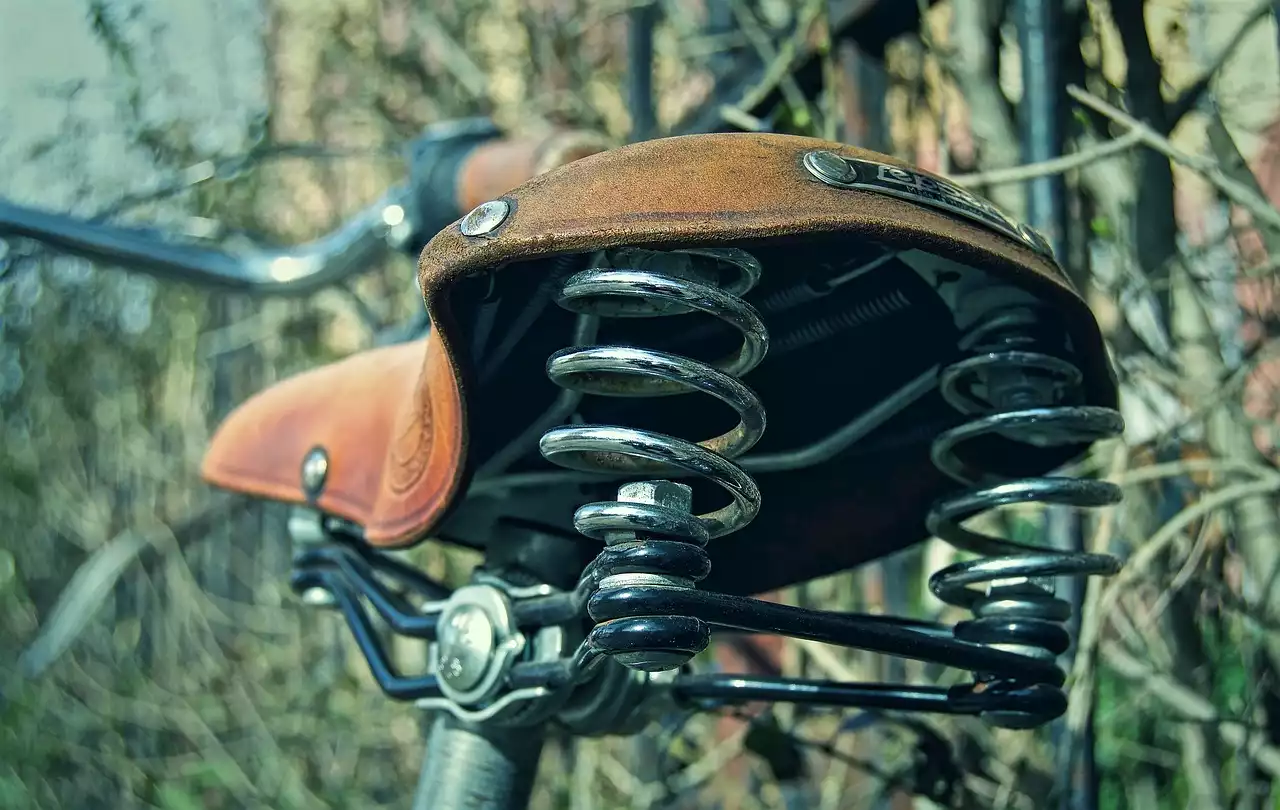The bicycle is one of the most popular inventions of all time, and it has been a major part of our way of life for over 160 years. Before the bicycle, people traveled by foot or horseback. In 1818, German Baron Karl von Drais invented the Laufmaschine (German for "running machine") to help him move faster on his property. Later in 1867, Frenchmen Pierre Michaux and Ernest Michaux invented a pedal-powered machine that they called a velocipede (which means “fast foot”). This was the first two-wheeled bike with pedals. The velocipede had many design flaws that eventually led to its demise; however, the next iteration was much better. In 1885, James Starley created an “Ordinary” style bicycle, the forerunner to today's traditional diamond frame bicycles. These bikes featured high-wheel frames and steel tubing making them lighter than other bikes at the time.
The first bicycles emerged in Germany and France as early as 1817. The invention of the bicycle led to a technological revolution that has impacted our world in countless ways, both obvious and not so obvious. From the very beginning, inventors of the bicycle have been trying to find ways to make it more efficient and easier to use. The high-wheel bicycle was invented in 1869. It had a large front wheel with a smaller back wheel mounted on an axle between two sprockets. The problem with this design is that it was difficult for a person to mount the bike without getting off it first. In 1885, James Starley created an Ordinary style bicycle, the forerunner of today's traditional diamond frame bicycles. These bikes featured high-wheel frames and steel tubing making them lighter than other bikes at the time. The safety bicycle that we know today took its first steps in England in 1885 when John Kemp Starley and William Sutton produced their Rover bike with chain-driven rear wheels and pneumatic tires (which would later become known as "pneumatic tires"). In 1888, Humber also introduced a safer design called a "safety" bicycle which resulted in lower injuries to cyclists during accidents because of improved balance from increased stability from two equal size wheels distributed across each side of the bike.
Why did the bicycle become popular?
One of the most important reasons why the bicycle became so popular is because it was a new invention. The bicycle didn’t exist before 1817, so most people had never seen one before. It was a new form of transportation that allowed people to get around faster and farther than they could by walking. In 1890, at least one in five U.S. residents owned a bike. This was mostly due to economics; the prices for bikes dropped drastically over the years as manufacturing methods improved, which made them more affordable to people who hadn't been able to afford them in the past.
Another reason why bicycles became so popular is because they were practical in cities and towns where roads were getting clogged with horse manure and other debris from animals on the road. The bicycle was a clean mode of transportation that allowed people to travel greater distances without stopping for horses or waiting for streetcars or buses. And once paved roads became more common, bicycling became even more popular because there weren't any ruts or holes in the ground from construction filling in with dirt and debris.
What makes a bike good?
There are many qualities that make a bike good. First, a good bike is lightweight, which makes it easier to carry and transport when necessary. A lightweight frame also means less energy is used when the bike is in motion. It also has a steel or aluminum construction as opposed to carbon fiber or other composites. Steel and aluminum are durable material that can withstand more abuse than other materials, which would make the bike last longer. Other qualities include a streamlined appearance and high-quality brakes for quick stops.
The Pneumatic Tire
In 1887, John Boyd Dunlop, a Scottish veterinarian living in Belfast, patented the pneumatic tire. He designed his bike as a means to get around while he was working in the countryside. The pneumatic tire helped bicycles go faster and gave riders more control over the bike.
The bicycle is one of the most popular inventions of all time. Before the bicycle, people traveled by foot or horseback. In 1818, German Baron Karl von Drais invented the Laufmaschine (German for "running machine") to help him move faster on his property. Later in 1867, Frenchmen Pierre Michaux and Ernest Michaux invented a pedal-powered machine that they called a velocipede (which means “fast foot”). This was the first two-wheeled bike with pedals. The velocipede had many design flaws that eventually led to its demise; however, the next iteration was much better: it had gears and used air pressure for tires - making it easier to ride than previous models and more comfortable than walking . In 1885, James Starley created an “Ordinary” style bicycle which became known as today's traditional diamond frame bicycles. These bikes featured high-wheel frames and steel tubing making them lighter than other bikes at the time.
John Boyd Dunlop's invention of the pneumatic tire in 1887 really helped bicycles go faster and gave riders more control over their bikes.


 How to Choose the Right Gymnastics Program for Your Child
How to Choose the Right Gymnastics Program for Your Child
 Pros and Cons of Commercial Trawling
Pros and Cons of Commercial Trawling
 From Beginners to Stars: The Journey of a Rodeo Athlete
From Beginners to Stars: The Journey of a Rodeo Athlete Professional Cycling and Drugs
Professional Cycling and Drugs History of the Bicycle Tire
History of the Bicycle Tire